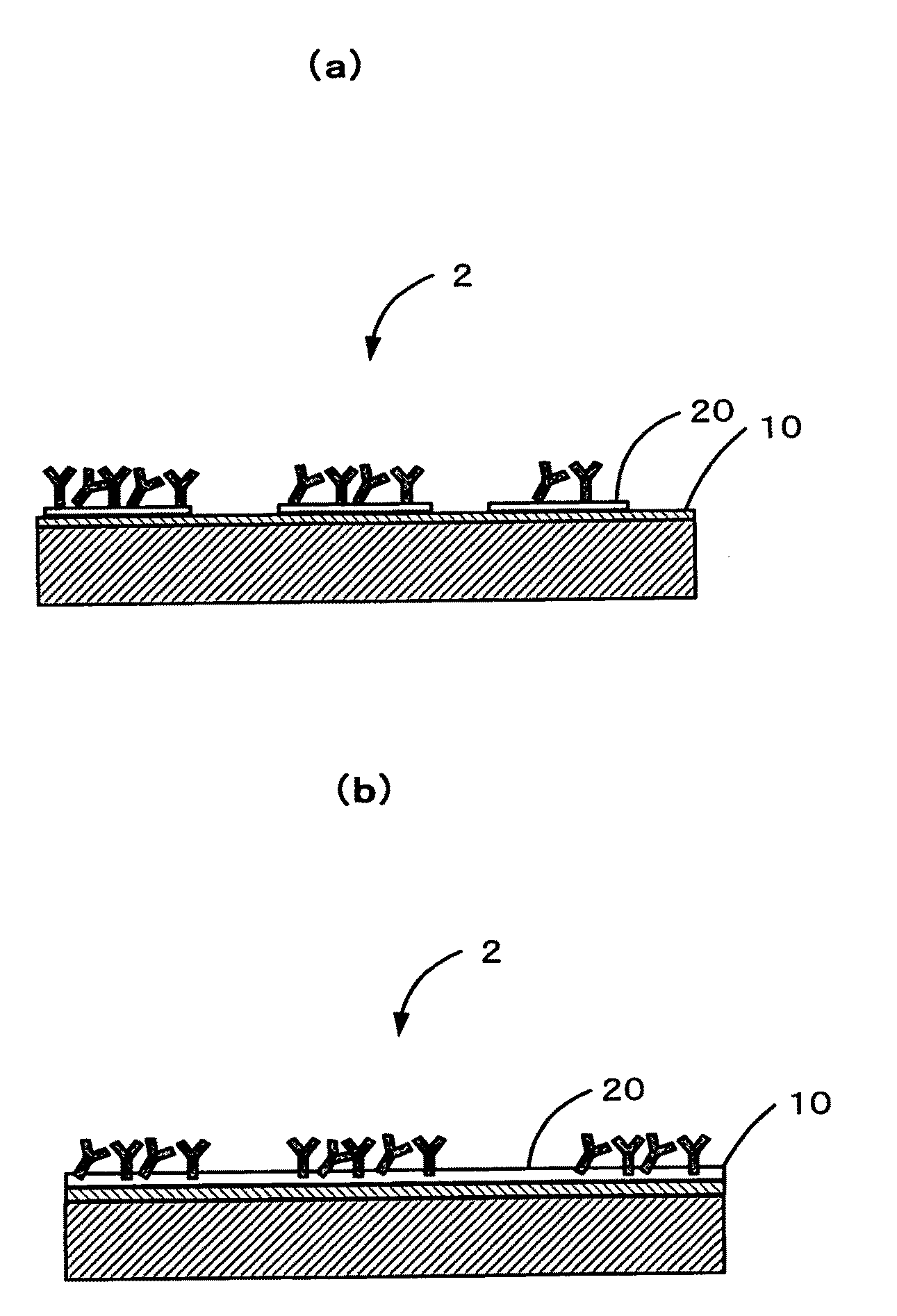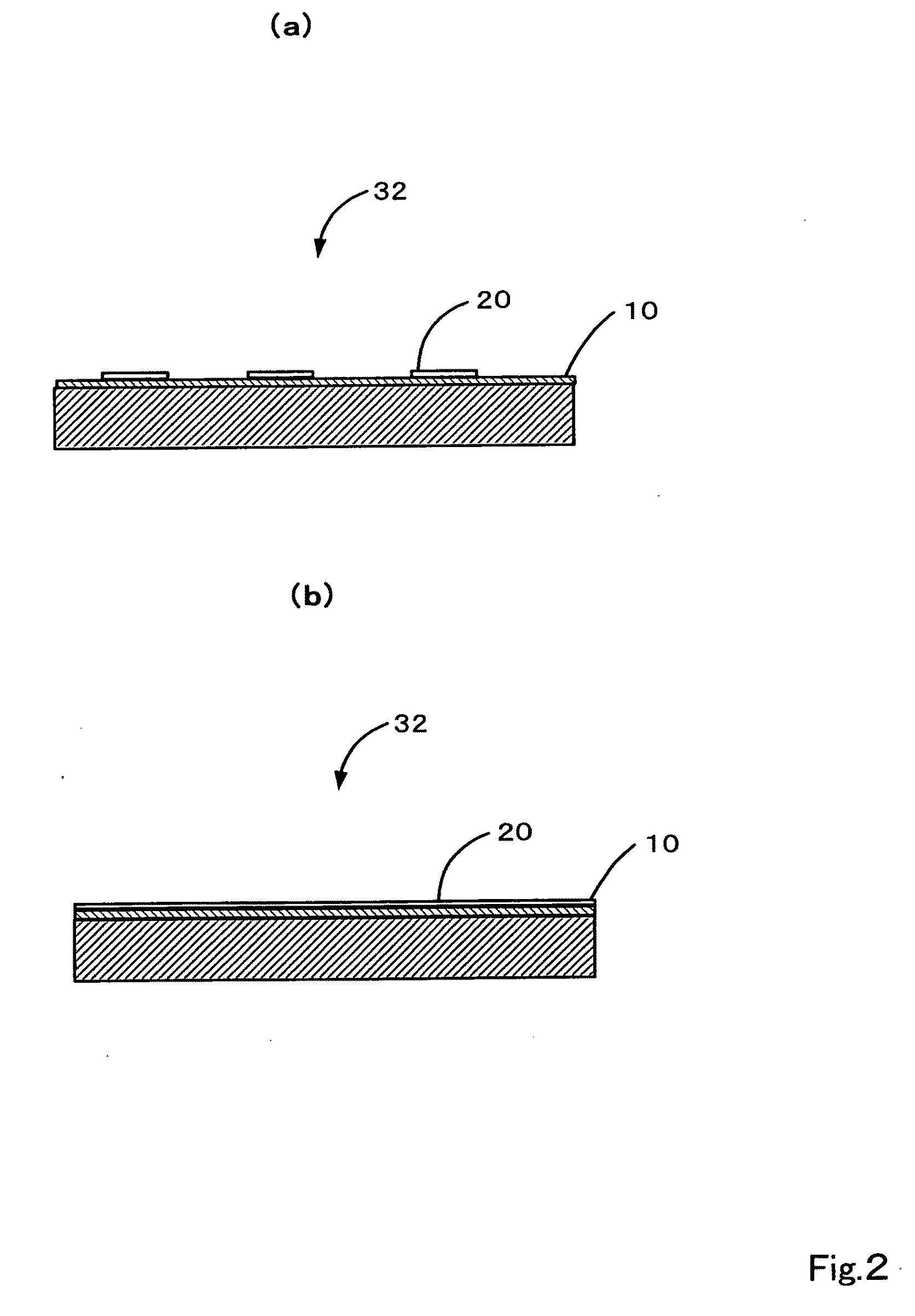Method of producing solid-phase body having immobilized microobject and the use thereof
a technology of solid-phase body and immobilized microobject, which is applied in the direction of electric/magnetic/electromagnetic heating, instruments, peptides, etc., can solve the problems of microobjects being adversely affected, microobjects being directly touched by solid-phase materials, and deteriorating activity, etc., and achieves small molecular weight
- Summary
- Abstract
- Description
- Claims
- Application Information
AI Technical Summary
Benefits of technology
Problems solved by technology
Method used
Image
Examples
example 1
Design of Intermediate Molecule
Synthetic Peptide
[0166]A number of α helix peptides of 20 residues (SEQ ID NO: 46-101) shown in FIG. 4 were designed as an intermediate molecule, and a peptide library was synthesized chemically. These peptides, when forming α helix as shown in FIG. 5(a), have a hydrophobic amino acid residue predominantly arranged at least on one side of the α helix in a spiral dorection and exhibite hydrophobicity at least on the side. In other words, as shown in FIG. 5(b), a wheel model in which an α helix structure of two rotations is taken as a wheel was constructed and hydrophobic amino acid residues were coordinated to a, b, e and f positions of an amino acid sequence (a, b, c, d, e, f, g) along the rotation direction of the α helix. Additionally, these synthetic peptides all had 20 or less amino acid residues and had a molecular weight of 5000 or less (700 to 2200).
example 2
Evaluation of Fixability
[0167]1 μL each of a 100 μg / mL aqueous solution of each synthetic peptide was added dropwise to an AZO film, vacuum-dried and was subjected to light irradiation (20 mW / cm2) at 25° C. for 0.5 hour. Thereafter, the resulting material was washed with TPBS three times and the synthetic peptide was subjected to light fixation. To this was added dropwise 50 μL of a 1 μg / mL Cy5-labeled Goat anti mouse IgG (AP127S, available from CHEMICON International Inc.) / TPBS solution and the resulting material was irradiated with light (20 mW / cm2) at 25° C. for 17 hours to light-fix the antibody, with the material covered with a gap cover glass plate. Thereafter, the resulting material was washed with TPBS 3 times for 1 minute. This slide glass was set in an array scanner and the amount of fluorescence of the spot made by adding dropwise the peptide was determined. The results are shown in FIG. 6.
[0168]As shown in FIG. 6, the fluorescence intensities of several spots of the spot...
example 3
Evaluation of Effect of Light Irradiation
[0171]The difference of the amounts of light fixation with and without light irradiation (25° C. for 17 hours) in the experimental procedure of Example 2 was evaluated. Results are depicted in FIG. 7.
[0172]As shown in FIG. 7, the amounts of fluorescence were increased in a plurality of peptides (Nos. 1, 2, 6, 8, 9, 12, 14, 21, 30, 31, 32, 33, 34, 35, 40, 41, 45, 46, 50, 52, 53, 54, 55, and 56) by light irradiation in the presence of an antibody. This strongly supports that AZO films have an action of immobilizing an antibody even in a state in which a synthetic peptide that is an intermediate molecule is used. The maintenance of fixability in the presence of an intermediate agent by light irradiation relates to the fact that the immobilization principle of light fixation is due to surface deformation and a microobject is thought to be directly interactive with a support.
PUM
| Property | Measurement | Unit |
|---|---|---|
| thickness | aaaaa | aaaaa |
| noncovalent interaction | aaaaa | aaaaa |
| hydrophilic | aaaaa | aaaaa |
Abstract
Description
Claims
Application Information
 Login to View More
Login to View More - R&D
- Intellectual Property
- Life Sciences
- Materials
- Tech Scout
- Unparalleled Data Quality
- Higher Quality Content
- 60% Fewer Hallucinations
Browse by: Latest US Patents, China's latest patents, Technical Efficacy Thesaurus, Application Domain, Technology Topic, Popular Technical Reports.
© 2025 PatSnap. All rights reserved.Legal|Privacy policy|Modern Slavery Act Transparency Statement|Sitemap|About US| Contact US: help@patsnap.com



